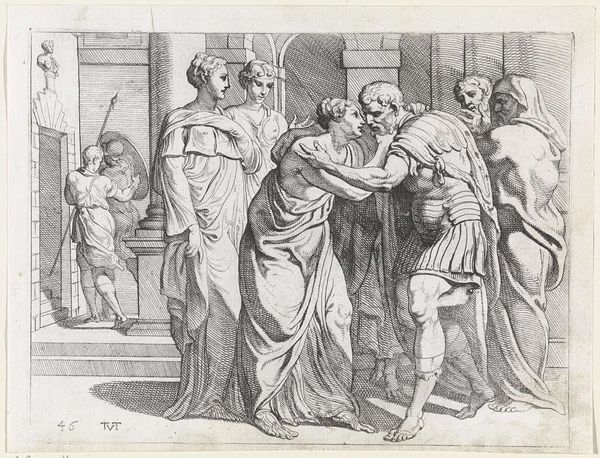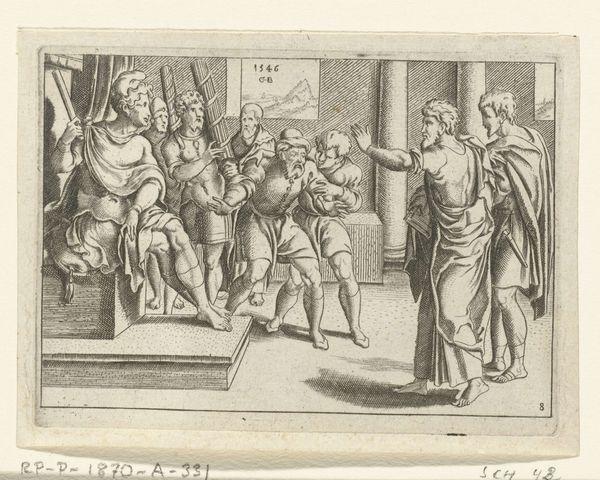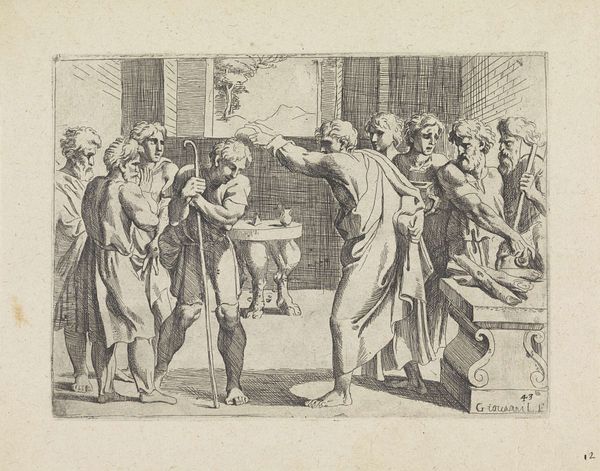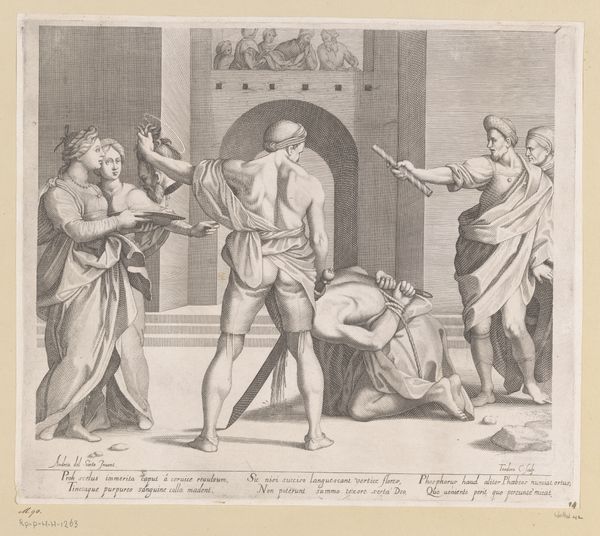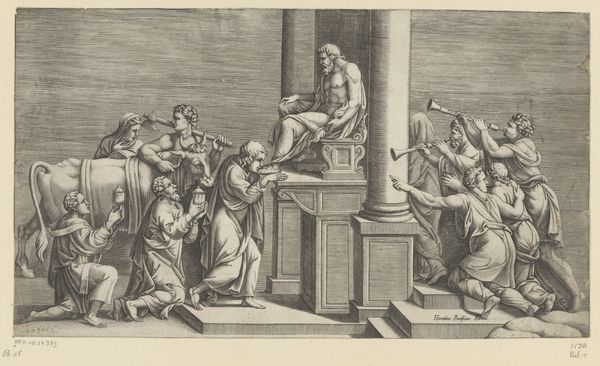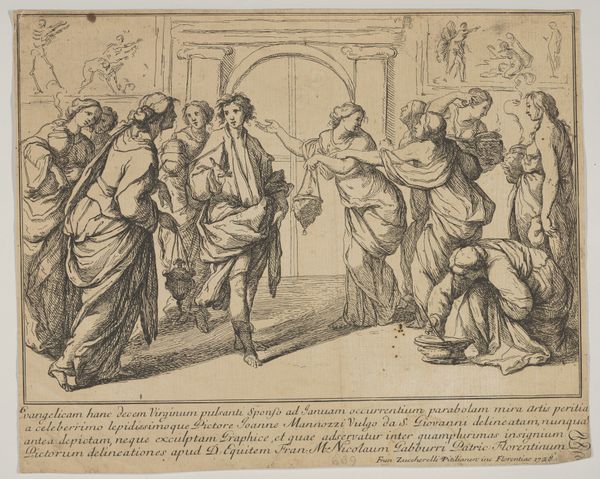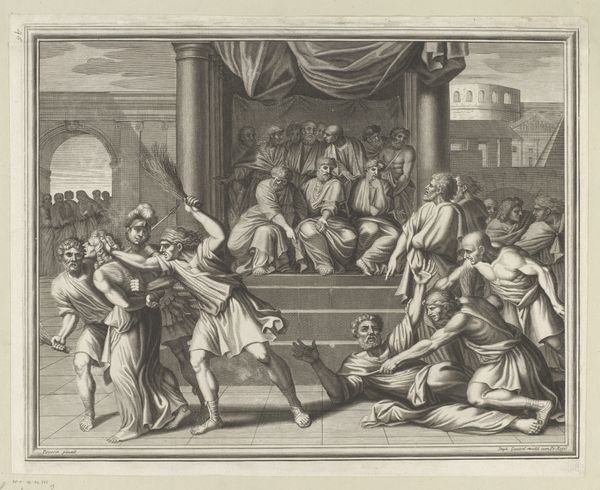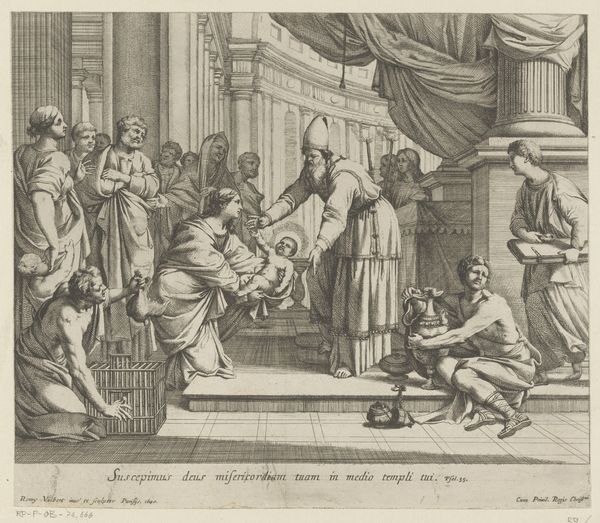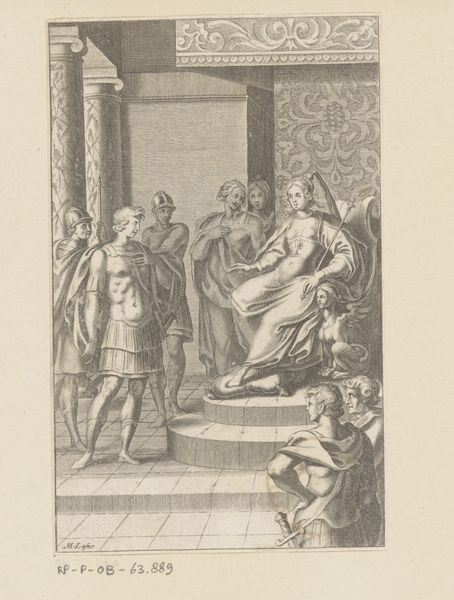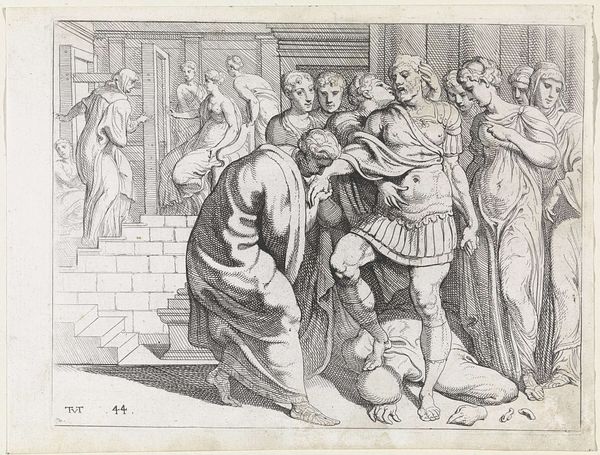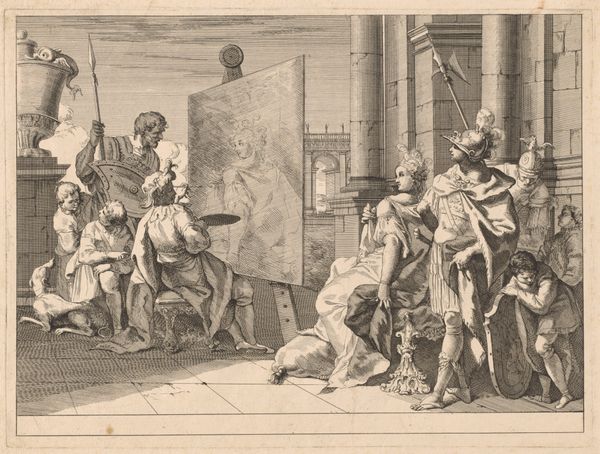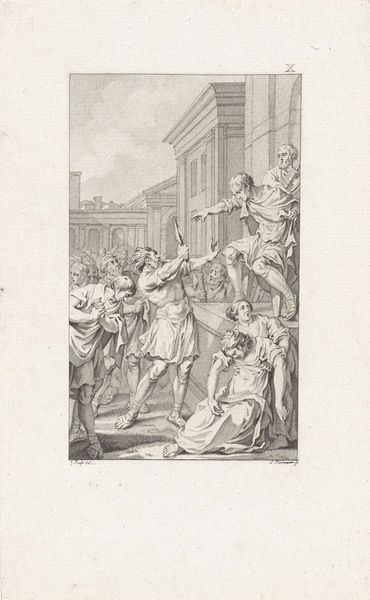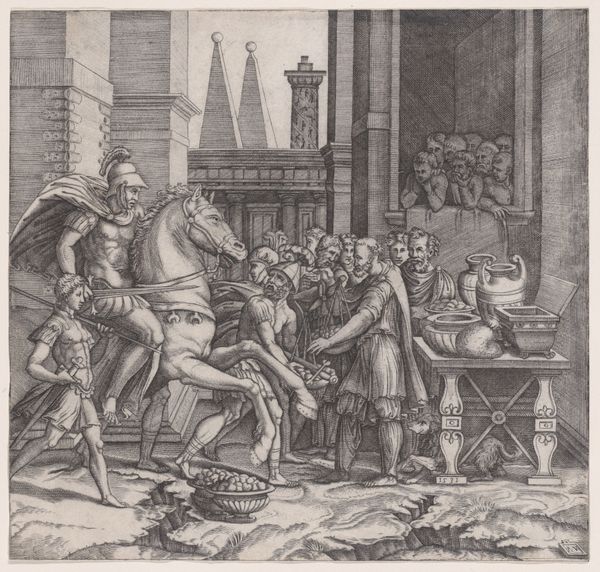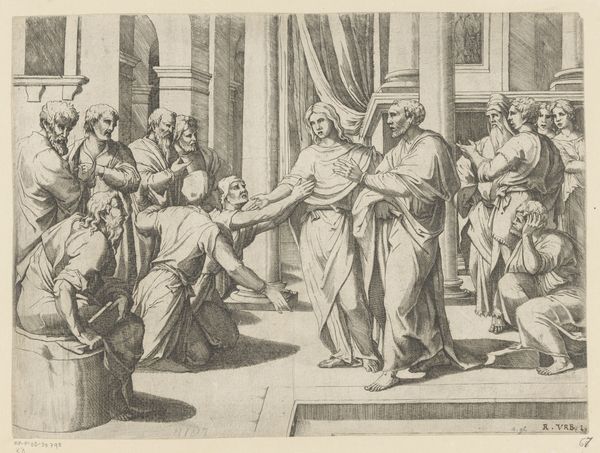
print, engraving
#
baroque
# print
#
old engraving style
#
figuration
#
history-painting
#
engraving
Dimensions: height 302 mm, width 437 mm
Copyright: Rijks Museum: Open Domain
Curator: I'm immediately struck by the starkness of this composition; the high contrast in the engraving creates such drama, doesn't it? Editor: Indeed. The piece we're looking at is titled "Gevangenneming van Johannes de Doper," or "The Imprisonment of John the Baptist," made between 1617 and 1618. The artist is Dietrich Krüger, and we're fortunate to have it here at the Rijksmuseum. Thinking about it from the viewpoint of its construction, the lines are so deliberate, aren't they? Every etched groove tells a story. It's printed as an engraving; imagine the artisan's labor behind each print. Curator: Absolutely, you feel the hand that guided the burin. And it's impossible not to consider the socio-political context of religious persecution when viewing a scene like this. How do you read the power dynamics playing out? Editor: The visual language used is compelling: note the theatrical staging, the opulence versus the bare flesh. There’s such an imbalance shown in the work when discussing modes of artistic production. It challenges any neat categorization. It makes you wonder what the original owner's social circles would make of the depicted narratives in print, disseminated and consumed almost as mass media. Curator: A fascinating observation. What about the relationship between art and power that you notice from looking at this work of art? Is Krüger siding with the oppressed, or merely documenting an event, feeding a morbid fascination of the patrons? Editor: It's difficult to say definitively; artistic creation isn't divorced from the societal forces that uphold systems, and here, artistic intent is filtered through subject matter, which means, through both, history. I see John, head held high, a potent figure of resistance even in captivity, while those on the steps seem almost like spectators, caught in their machinations. The print is very much involved in a dialogue, making us all feel uncomfortable about it. Curator: Thank you. Now I see the piece through a different light; one has to engage with it with the realities of its time. It all really is much deeper than appearances, even after a seemingly superficial encounter. Editor: My pleasure. Every detail matters when understanding the complexities and meanings interwoven through the prints such as this one.
Comments
No comments
Be the first to comment and join the conversation on the ultimate creative platform.
